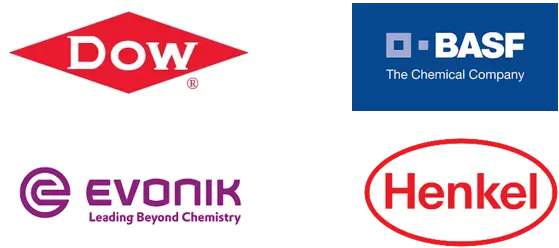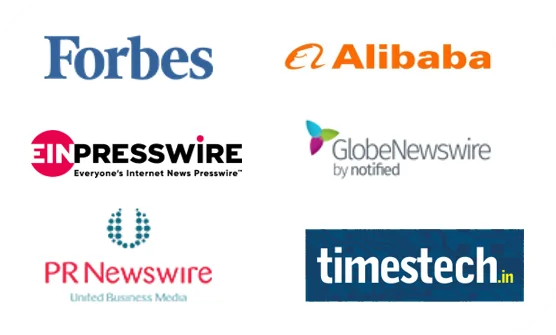Polypropylene Injection Molding Market Overview:
As per Reports and Insights Analysis, the polypropylene injection molding market is expected to grow at a CAGR of 4.2% during the forecast period of 2022 to 2030.
The most widely used type of injection-molded plastic worldwide is polypropylene. The better physical and chemical properties of polypropylene are the cause of this supremacy. It has a higher flexural strength than other polymers and is less costly. It resists a variety of chemical reactions and is water resistant.
This market study on the global polypropylene injection molding market aims to cover market dynamics including market drivers, challenges, polypropylene injection molding market opportunities for the market players, market segmentation outlook, polypropylene injection molding market trend, regional outlook, polypropylene injection molding market size, and market share, industry insights, product insights, SWOT analysis, Porter's five force analysis, PESTEL analysis, heat map analysis, polypropylene injection molding market forecast and the major players operating in the polypropylene injection molding market globally.
Polypropylene Injection Molding Market Dynamics:
Market dynamics covers market drivers, challenges, market opportunities, and market trends as discussed below;
Market Drivers: Increased demand for plastic injection molding across a variety of industries
Growing demand for molded plastics across a range of end-user sectors is driving the growth of the polypropylene injection molding market. Polypropylene products may be produced in large quantities with high efficiency and little resource waste thanks to the injection molding technique. As a result of its low production costs and great repeatability, its market share is increasing. In numerous end-user industries, injection-molded polypropylene has a wide range of uses. To replace heavy metal components, the car industry is likewise becoming more and more dependent on lightweight and durable materials. In a similar vein, the demand for injection-molded polypropylene is on the rise as the packaging, construction, and pharmaceutical industries grow.
Additionally, the injection molding sector will surely profit from technological developments in molding technology, which will also support the expansion of the plastic injection molding market.
Market Challenges: The high initial cost of injection molding equipment
The main growth restraint in the global polypropylene injection molding market is the high cost of manufacturing technology. As raw materials for the plastic sector, and petroleum products, the erratic nature of fuel costs restrains market expansion. Additionally, the market will be negatively impacted by the rise in awareness of the harm that polypropylene does to the environment and research into alternatives.
The availability of alternative technology
The usage of injection molding is restricted by several different economical techniques. Polypropylene injection molding is a pricy technology that further inhibits market expansion. Emerging technologies, such as three-dimensional (3D) printing, are constantly improving and can now produce small objects that resemble injection-molded ones. The market for products made with polypropylene injection molding is predicted to suffer shortly as a result of additional advancements in these technologies.
Market Opportunities: More focus is being placed on using lightweight materials to cut down on fuel usage
A wide range of vehicle components, including wheel covers, enclosures, consoles, headlamp housings, and interior components, are made of injection-molded polypropylene. The replacement of metal parts in vehicle design has been encouraged by their high tensile strength, chemical corrosion resistance, lightweight, durability, and strong resistance to physical impact. The market for polypropylene injection molding in these regions is being driven by the introduction of stricter car pollution standards as well as a greater focus on fuel efficiency. Injection-molded polypropylene also offers better recyclability, durability, abrasion resistance, vibration control, and strength, which is why carmakers are successfully using them.
Therefore, throughout the anticipated period, there will be lucrative prospects for the expansion of the polypropylene injection molding market due to the growing emphasis on lightweight materials to lower fuel consumption.
Market Trends:
Applications for polypropylene material are expanding in the home goods, packaging, and automotive industries. Due to its exceptional electrical insulating qualities, it is mostly utilized in electrical connection covers and bases to offer electrical and mechanical support. Thus, during the course of the forecast period, the market expansion for injection-molded polypropylene is expected to be aided by the growing popularity of polypropylene material.
A significant market trend is the replacement of injection molded plastics in automobile components with metals and alloys. The market for injection molded plastics is anticipated to develop as consumers desire lighter vehicles to save on fuel. As a result, the increased use of sophisticated polymers is another factor contributing to the growth of the polypropylene injection-molding market.
Polypropylene Injection Molding Market Regional Outlook:
In terms of region, the polypropylene injection molding market is dominated by Asia-Pacific. Increased infrastructure spending along with the rise in automobile demand is anticipated to promote market penetration in the developing nations of the Asia-Pacific region. Low labor costs in Asia-Pacific countries like Japan, China, and South Korea as well as important end-use sectors like automotive and electronics are propelling the market's expansion.
The polypropylene injection molding market's fastest-growing area is in Europe. Some packaging applications in the Europe region including those for cosmetics, medications, and household chemicals will fuel demand for consumables.
Polypropylene Injection Molding Market Key Players:
BASF, DOW Chemicals, Huntsman Corporation, Ineos Oxide, Saudi Basic Industries Corporation, Exxon Mobil Corporation, Du Pont de Nemours & Company, and LyondellBasell Industries are just a few of the companies that make up this industry.
Recent Developments by Key Players:
In October 2021, American manufacturing business Silgan Holdings, based in Connecticut, purchased Gateway Plastic, a company that made integrated dispensing packaging solutions and dispensing closures. Due to the increased need for product packaging, the global market for injection-molded plastics will grow
In September 2020, ALPLA, a pioneer in the research and manufacture of plastic packaging solutions, purchased a PET bottle production facility from Amcor PLC in Pune, Western India. This acquisition further expanded ALPLA's offering of packaging solutions.
Pexco LLC, a North American plastic extruder, purchased American Injection Molding Linc. & American Extruded Plastics Inc. in August 2019. This transaction was made by Pexco LLC to provide integrated molded plastics.
Polypropylene Injection Molding Market Segmentation Outlook:
Polypropylene injection molding market is divided into segments based on raw material, application, and region.
Polypropylene Injection Molding Market, by Raw Material
Acrylonitrile Butadiene Styrene
High-Density Polyethylene
Polypropylene
Polystyrene
Others
Polypropylene Injection Molding Market, by Application
Automobile
Building & Construction
Consumer Goods
Electronics
Healthcare
Packaging
Polypropylene Injection Molding Market, by Region
North America
Latin America
Asia-Pacific
Europe
Africa
Middle East

